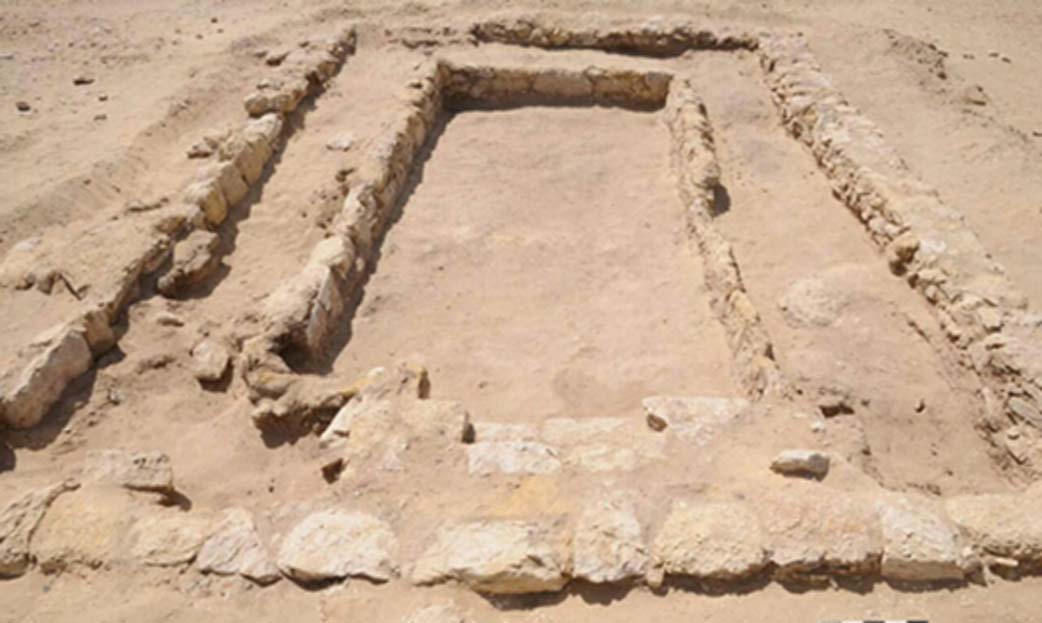First Ever Greek-Style Gymnasium Unearthed in Egypt
A team of German and Egyptian archaeologists has unearthed the first Hellenistic gymnasium ever found in Egypt. Experts suggest that the gymnasium was used during the Ptolemaic period for training young Greek-speaking males in sports, literacy and philosophy.
Hellenistic Gymnasium Unearthed in Egypt
According to Ahram Online, a German-Egyptian archaeological mission, led by Professor Cornelia Römer, has uncovered the remains of the first gymnasium in Egypt dating back to the Hellenistic era, almost 2300 years ago. The discovery was made on the site of Watfa, approximately five kilometers east of Lake Qaroun in Fayoum governorate as the Egyptian Ministry of Antiquities revealed in a statement on Monday. Watfa is the site of the ancient village of Philoteris, founded by King Ptolemy II in the 3rd century BC. Initially, it had around 1,200 inhabitants, two thirds of them Egyptians, and one third Greek-speaking settlers. “The archaeologists discovered remains of the first Hellenistic gymnasium ever found in Egypt on the site of Watfa, 5 km east of Qasr Qaroun in the north-western Fayoum," said the statement.
- The Greatest Runner You Have Never Heard Of: The Other Famous Greek Leonidas
- Since Ancient Greece, the Olympics and Bribery Have Gone Hand in Hand
- Unleashing The Power of the Gods: Hexes and Black Magic in the Ancient Greek Olympics

A part of the gymnasium, which included a 200-meter-long racetrack. (Egyptian Ministry of Antiquities)
Aymen Ashmawi, head of the Ancient Egyptian Antiquities sector at the Ministry of Antiquities stated that the Greek-style gymnasium had a large hall for meetings, a dining hall and a courtyard in the main building, besides a nearly 200-meter-long outdoor racetrack. There were also once “generous gardens” all around the building.
The Greek Impact and Influence on Egypt
"The gymnasium of Watfa clearly shows the impact of Greek life in Egypt, not only in Alexandria, but also in the countryside," Römer said as Ahram Online reports. Furthermore, Römer explained that gymnasia were usually founded and funded privately by wealthy people who wanted their villages to be heavily influenced by Greek culture and lifestyle. There, young men coming from the Greek speaking upper-class were trained in sports, literacy and philosophy.

Men bathing in a public gymnasium. Gouache painting. (CC BY 4.0)
This is the reason according to Römer, why all major cities of the Hellenistic world, such as Athens in mainland Greece, Pergamon and Miletus in Anatolia, and Pompei in Italy, had such gymnasia. “The gymnasia in the Egyptian countryside were built after their pattern. Although much smaller, the gymnasium of Watfa clearly shows the impact of Greek life in Egypt, not only in Alexandria, but also in the countryside," Römer said via Ahram Online.
Alexander the Great’s Contribution to the Hellenization of Egypt
As Römer went on explaining, it was Alexander the Great who made Egypt part of the Hellenistic world, and made it an attractive destination for thousands of Greek-speaking settlers who wanted to enjoy a good and peaceful life in the Ptolemaic Empire. This gradually led to the foundation of new villages in the Delta and the Fayum. The local populations and the newcomers would live there together in harmony, while the villages hosted both Egyptian temples and Greek sanctuaries. “These villages also contained public baths, a feature common in Greek societies,” Römer said as Ahram Online reports, and also added that the Greek gyms were just a further extension of the Hellenistic culture.
- Worshipers, Rule-Breakers and Champions: Women and the Ancient Greek Olympics
- A Hellenistic Eden: One Ancient King’s Attempt to Create the Perfect City on Earth
- Fact or Fiction? The Obscure Origins of the Greek Alexander Romance

Athletes in a gymnasium. Gouache painting. (CC BY 4.0)
First Building of its Kind
Inscriptions and papyri describing payments for parts of the main buildings conducted by wealthy residents of the villages and of the men who governed the institutions, were found in the countryside during the Ptolemaic period. However, Römer pointed out that the building at Watfa is the first of its kind to ever be found, noting the immense archaeological value and uniqueness of the specific discovery.
The German Archaeological Institute has been examining and excavating the site of Watfa for the past seven years. As the Egyptian Ministry of Antiquities mentions, one of the most significant goals of the project‘s work is to educate Egyptian students about their country’s rich history and culture, in cooperation with a teaching program at Ain Shams University, supported by the German Academic Exchange Service (DAAD).
Top image: Photo released by the Egyptian Ministry of Antiquities shows an ancient gymnasium dating back about 2,300 (Egyptian Ministry of Antiquities)



















